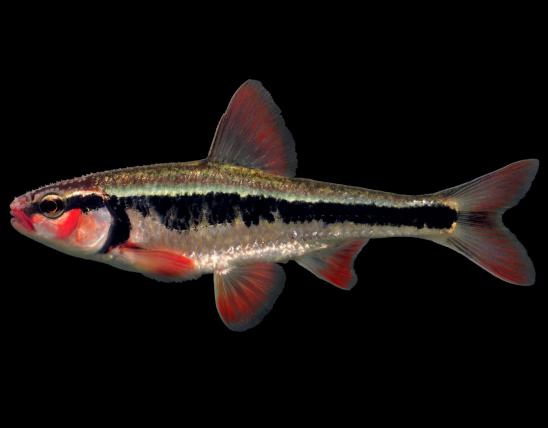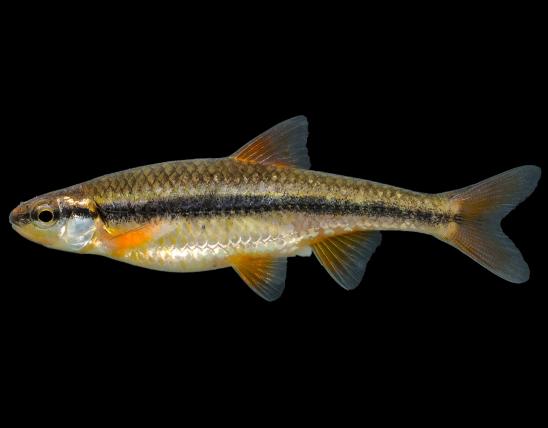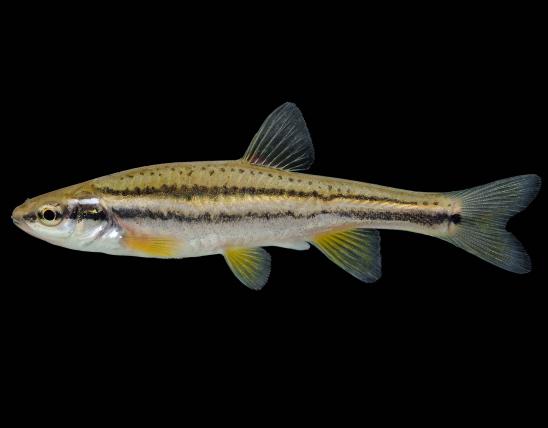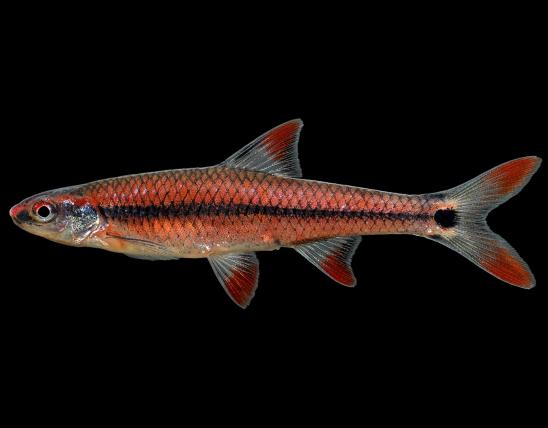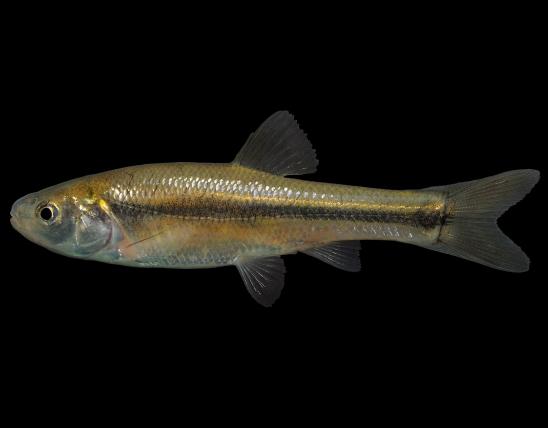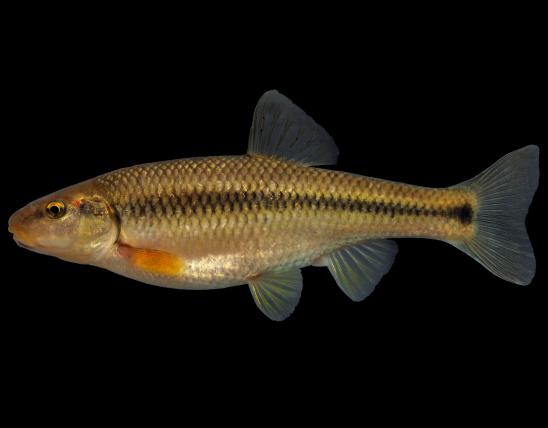
The duskystripe shiner has a dark stripe along the midside extending from nose to tail; an iridescent greenish-brown back with a narrow, lighter-colored band above the lateral dark stripe; and a silvery-white lower side and belly. Breeding males have bright red fins, cheeks, and underside of head and body. Tip of snout is blue.
Similar species: Bleeding and cardinal shiners look similar, but the ranges for those species do not overlap with the duskystripe shiner.
Total length: 3 1/2 to 4 1/2 inches; maximum about 4 3/4 inches.

In Missouri, only found in the White River system of southwest and south-central Missouri.
Habitat and Conservation
Typically found in stream pools in mixed-species schools with a number of other minnows. Most commonly found in Ozark headwater streams with swift riffles and pools with clean gravel bottoms. Unlike the similar cardinal shiner, this species can be found in headwater streams.
Food
Aquatic and terrestrial insects. Researchers have also found in the stomachs of this species algae, leafy and woody material, and seeds from land plants.
Life Cycle
Few live beyond four years. Peak activity is at dawn and dusk. Spawns over the gravel depressions around the mound nests of hornyhead chubs, usually in close association with another minnow species: southern redbelly dace, Ozark minnow, and rosyface shiner. Sometimes hybridizes with those species.
























